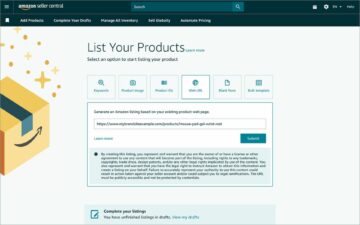In the current digital landscape, companies are increasingly reliant on technology and data to guide their operations and inform their decision-making processes, thus CRM (Customer Relationship Management) data is pretty important. Among various forms of data, customer relationship management data is particularly important in helping businesses comprehend and serve their clients. CRM data consists of information that businesses gather about their clients and their interactions with the company, which is utilized to manage and enhance customer relationships.
What is CRM data?
It is the data that is collected and stored in a CRM (customer relationship management) system. This data can include customer contact information, details about customer interactions, information about the products or services that customers have purchased or expressed interest in, and any notes or observations about the customer. The purpose of CRM data is to help a business manage and improve its relationships with its customers. It can be used for a variety of purposes, such as helping a sales team track and follow up with leads, analyzing customer behavior to identify trends or patterns, and providing personalized customer service.
CRM data management
CRM data management involves the processes and systems that a business uses to collect, store, and analyze customer relationship management (CRM) data. Here’s an overview of how a CRM data management system typically works:
The first step in CRM data management is to collect data from various sources, such as customer interactions, sales and marketing activities, and web forms. The collected data is then stored in a CRM system, which is a specialized database designed to manage customer data.
Once the data is stored in the CRM system, it can be analyzed to identify trends, patterns, and insights that can help the business understand its customers and improve its operations. The CRM system can generate reports based on the analyzed data, which can be used to track performance, identify areas for improvement, and make informed decisions.

What are the types of CRM data?
There are 4 main categories when it comes to the types of CRM data:
Identity data
Identity data refers to information that is specific to a particular customer or lead and is used to identify them within a CRM system or database. This can include things like a person’s name, address, and contact information. Identity data is unique to a single individual or organization and is used to help identify specific records within a CRM system or other database.
Identity data not only helps to identify records, but it also helps teams communicate with and assist leads and customers, as well as complete tasks. For instance, before starting a cold call campaign, sales representatives need to create a list of recipients with identity information such as names and phone numbers. Without storing this data in a CRM system, the sales team would have to spend more time researching each potential prospect, which would be less efficient.
Your search for the best CRM solution for SMBs is now over
Descriptive data
Descriptive data provides context, characteristics, or traits about a lead, contact, customer, or opportunity. Unlike identity data, which is used to identify a single record, descriptive data can be used to filter or find multiple records because it is relevant to multiple leads or customers. Examples of descriptive data include:
- Job title
- Industry
- Organizational size
- Lead or deal stage
- Geographic location
Descriptive data offers personal insights into individual records to help sales, customer service, or marketing teams better communicate and assist leads and customers. For example, knowing someone’s name from their identity data can help you start a conversation with a lead, but knowing their job title, industry, and company size can help you find and tailor a solution to their specific needs. CRM systems can store and organize this type of data in a profile or through tagging and labeling features.
Qualitative data
Qualitative CRM data refers to the motivations, behaviors, or feelings of a lead or customer that cannot be quantified. While identity and descriptive data can often be obtained through basic online research, qualitative data is subjective and requires more complex methods such as surveys, activity tracking, or discussions with current and potential customers to collect. Examples of qualitative data include:
- A lead reaching out about pricing
- A customer being very satisfied with their recent purchase from the business
- A customer indicating that they value improved usability in a product
- A lead expressing an interest in the business’s product or service due to a desire to improve operational efficiency
The main difference between descriptive and qualitative data is the scope from which the information is obtained. Descriptive data provides information about what a record is, while qualitative data provides information about what a record thinks, does, or feels about a brand, product, or service.

For example, if you are selling project management software to a corporation, their industry and company size represent what the record is, while their desire to find a more affordable software solution represents what the record thinks. This type of information can be used to understand the thoughts of leads and customers and can help to improve and develop products or services, enhance customer support, and optimize CRM marketing, sales campaigns, and operations.
It can be more difficult to create or filter contact information based on qualitative data, but CRM systems allow you to add this information to profile records as notes or activity.
Quantitative data
Quantitative data provides objective and numerical information about behaviors or feelings of a record, such as the number of times a customer clicks on an email, the potential revenue size of a current deal, or the total number of service tickets filed by a customer. This type of data can help to understand how a record behaves, thinks, or feels.
Quantitative data can be specific to individual customers, leads, or deals, or it can be aggregated. For example, calculating the total lead-to-deal conversion rate involves taking the pipeline statuses of all current leads and determining the percentage that became won deals. Similarly, calculating the total potential deal revenue involves adding up the potential deal size of each lead in the pipeline.
Since quantitative data is numeric, it is primarily used for analytics and reporting. Teams can use measurable CRM data to identify issues in their sales process, evaluate the effectiveness of marketing campaigns, track progress on sales goals, and assess the performance of individual reps.
Automate your workflow with the right solution: CRM vs Marketing Automation
How do you collect CRM data?
There are a variety of ways to collect CRM data:
Manual data entry
One way to collect CRM data is to manually enter it into the system, either directly or through the use of a spreadsheet or other data import tool. This can be time-consuming, but it can be useful for small amounts of data or for data that is not readily available through other means.
Data integration
Many CRM systems offer data integration capabilities that allow you to automatically import data from other sources, such as email platforms, marketing automation tools, or social media networks. This can save time and help ensure that data is kept up to date.

Web forms
You can use web forms to collect CRM data from customers or leads. For example, you might use a form on your website to gather contact information from people who are interested in learning more about your products or services.
Customer feedback
Collecting customer feedback can be a valuable source of CRM data. This can be done through surveys, focus groups, or other research methods.
Sales and support interactions
Any interactions that a business has with its customers can be a source of CRM data. This can include phone calls, emails, in-person meetings, and support tickets.
Overall, the best approach for collecting CRM data will depend on the specific needs and goals of a business, as well as the resources and capabilities it has available.
What’s the ideal CRM data structure?
There is no one “ideal” CRM data structure that will work for all businesses. The structure of your CRM data will depend on the specific needs and goals of your business, as well as the types of data that you need to collect and store. However, there are some general principles that you can follow to help ensure that your CRM data is structured in a way that is effective and efficient:
- Organize data into logical categories: Your CRM data should be organized into categories that make sense for your business. This can help you to quickly find and access the data you need.
- Use clear and consistent naming conventions: Using clear and consistent naming conventions for your data can help to reduce confusion and improve the overall organization of your data.
- Keep data up to date: It’s important to keep your CRM data up to date to ensure that it is accurate and useful. This may involve regularly reviewing and updating your data, as well as implementing processes to ensure that new data is entered accurately and promptly.
- Use data tags and labels: Tagging and labeling your data can make it easier to find and organize. For example, you might use tags to identify important customers or opportunities, or to highlight data that requires follow-up or action.
So, the key to an effective CRM data structure is to ensure that it is well-organized, clear, and consistent, and that it is regularly maintained and updated.
The impact of bad CRM data
Bad CRM data can have a number of negative impacts on a business, including:
- Poor customer experience: If a business has bad CRM data, it may not have accurate or complete information about its customers. This can lead to a poor customer experience, as the business may not be able to provide personalized service or support.
- Inefficient operations: Bad CRM data can also make it more difficult for a business to operate efficiently. For example, if a sales team has incorrect or outdated information about a customer, they may waste time following up on leads that are no longer interested or reaching out to the wrong contact.
- Missed opportunities: If a business has bad CRM data, it may miss out on opportunities to upsell or cross-sell to its customers, as it may not have complete or accurate information about their needs and preferences.
- Decreased revenue: All of these factors can lead to decreased revenue for a business. Poor customer experiences can lead to lost customers, inefficient operations can reduce productivity and profitability, and missed opportunities can prevent a business from fully realizing its revenue potential.
Overall, it’s important for a business to have accurate and up-to-date CRM data in order to provide a good customer experience, operate efficiently, and maximize revenue.

Conclusion
The importance of CRM data cannot be overstated. In an era of rapid technological change and new ways of doing business, CRM data helps businesses to stay competitive and adapt to changing market conditions. By collecting and analyzing CRM data, businesses can identify trends, target their marketing efforts more effectively, and improve the overall customer experience.
However, it is important for businesses to manage their CRM data carefully, as poor data management can lead to missed opportunities, decreased revenue, and other negative impacts. In this digital age, effective CRM data management is crucial for businesses looking to succeed in an increasingly complex and competitive marketplace.
- SEO Powered Content & PR Distribution. Get Amplified Today.
- Platoblockchain. Web3 Metaverse Intelligence. Knowledge Amplified. Access Here.
- Source: https://dataconomy.com/2023/01/crm-data-types-benefits-risks/
- 1
- a
- Able
- About
- access
- accurate
- accurately
- Action
- activities
- activity
- adapt
- address
- affordable
- All
- among
- amounts
- analytics
- analyze
- analyzing
- and
- approach
- areas
- automatically
- Automation
- available
- Bad
- based
- basic
- because
- before
- being
- benefits
- BEST
- Better
- between
- brand
- business
- businesses
- calculating
- call
- Calls
- Campaign
- Campaigns
- cannot
- capabilities
- carefully
- categories
- change
- changing
- characteristics
- clear
- clients
- collect
- Collecting
- communicate
- Companies
- company
- competitive
- complete
- complex
- comprehend
- conclusion
- conditions
- confusion
- consistent
- contact
- context
- Conventions
- Conversation
- Conversion
- CORPORATION
- create
- CRM
- CRM solution
- crucial
- Current
- customer
- customer behavior
- customer data
- customer experience
- customer relationship management
- Customer Service
- Customer Support
- Customers
- data
- data integration
- data management
- Database
- Date
- deal
- Deals
- Decision Making
- decisions
- designed
- details
- determining
- develop
- difference
- difficult
- digital
- directly
- discussions
- doing
- each
- easier
- Effective
- effectively
- effectiveness
- efficient
- efficiently
- efforts
- either
- emails
- ensure
- Enter
- entered
- Era
- evaluate
- example
- examples
- experience
- Experiences
- expressed
- factors
- Features
- feedback
- filter
- Find
- First
- Focus
- follow
- following
- form
- forms
- from
- fully
- General
- generate
- Goals
- good
- Group’s
- guide
- help
- helping
- helps
- Highlight
- How
- However
- HTTPS
- ideal
- identify
- Identity
- Impact
- Impacts
- implementing
- import
- importance
- important
- improve
- improved
- improvement
- in
- include
- Including
- increasingly
- individual
- industry
- inefficient
- information
- informed
- insights
- instance
- integration
- interactions
- interest
- interested
- involve
- issues
- IT
- Job
- Keep
- Key
- Knowing
- labeling
- Labels
- landscape
- lead
- Leads
- learning
- List
- longer
- looking
- Main
- make
- manage
- management
- manually
- Market
- market conditions
- Marketing
- marketing automation
- Marketing Campaigns
- marketplace
- max-width
- Maximize
- means
- Media
- meetings
- methods
- might
- more
- motivations
- multiple
- name
- names
- naming
- Need
- needs
- negative
- networks
- New
- Notes
- number
- numbers
- objective
- obtained
- offer
- Offers
- ONE
- online
- operate
- operational
- Operations
- opportunities
- Opportunity
- Optimize
- order
- organization
- Organized
- Other
- overall
- overview
- particular
- particularly
- patterns
- People
- percentage
- performance
- personal
- Personalized
- phone
- phone calls
- pipeline
- Platforms
- plato
- Plato Data Intelligence
- PlatoData
- poor
- potential
- preferences
- pretty
- prevent
- primarily
- principles
- process
- processes
- Product
- productivity
- Products
- Profile
- profitability
- Progress
- project
- project management
- prospect
- provide
- provides
- providing
- purchase
- purchased
- purpose
- purposes
- quantitative
- quickly
- rapid
- Rate
- realizing
- recent
- recipients
- record
- records
- reduce
- refers
- regularly
- relationship
- Relationships
- relevant
- Reporting
- Reports
- represent
- Representatives
- represents
- requires
- research
- Resources
- revenue
- reviewing
- risks
- sales
- satisfied
- satisfied with
- Save
- scope
- Search
- Selling
- sense
- serve
- service
- Services
- should
- Similarly
- single
- Size
- small
- SMBs
- Social
- social media
- Software
- software solution
- solution
- some
- Source
- Sources
- specialized
- specific
- spend
- Spreadsheet
- start
- Starting
- stay
- Step
- store
- stored
- structure
- structured
- succeed
- such
- support
- system
- Systems
- taking
- Target
- tasks
- team
- teams
- technological
- Technology
- The
- the information
- their
- things
- Thinks
- Thrive
- Through
- tickets
- time
- time-consuming
- times
- Title
- to
- tool
- tools
- Total
- track
- Tracking
- Trends
- types
- typically
- understand
- unique
- up-to-date
- updated
- updating
- usability
- use
- utilized
- Valuable
- value
- variety
- various
- very satisfied
- Waste
- ways
- web
- Website
- What
- What is
- which
- while
- WHO
- Wikipedia
- will
- within
- without
- Won
- Work
- workflow
- works
- would
- Wrong
- Your
- zephyrnet











